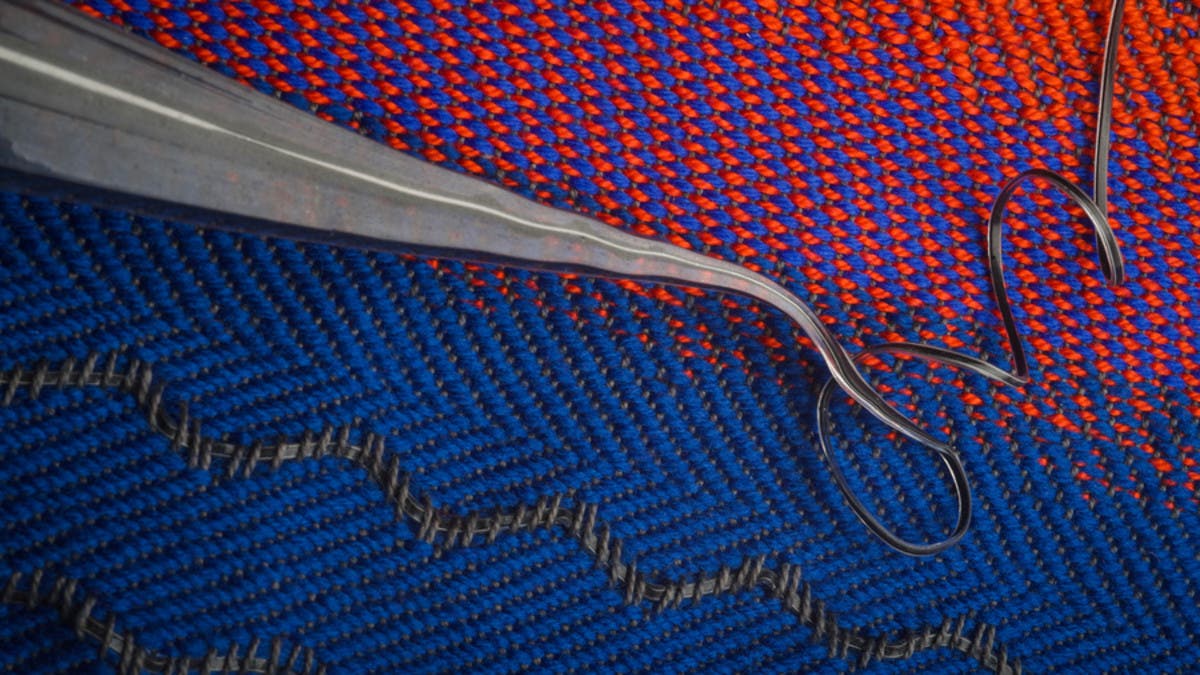Scientists from the Massachusetts Institute of Technology developed a fabric that can “hear” a person’s heartbeat via high-tech fibers.
The fabric could also be incorporated into maternity wear to help monitor a baby’s fetal heartbeat and can be used to monitor one’s heart and respiratory condition.
For the latest headlines, follow our Google News channel online or via the app.
“Wearing an acoustic garment, you might talk through it to answer phone calls and communicate with others,” said Wei Yan, the study’s lead author as an MIT postdoctoral student, in a statement released by MIT.
“In addition, this fabric can imperceptibly interface with the human skin, enabling wearers to monitor their heart and respiratory condition in a comfortable, continuous, real-time, and long-term manner,” added Yan, now an assistant professor at the Nanyang Technological University in Singapore.
The fabric was designed to work like a microphone, converting sound first into mechanical vibrations, then into electric signals, similar to the way the human ear works.
Though on a small scale, all fabrics vibrate in response to audible sounds. In order to capture these imperceptible signals, the MIT researchers created a flexible fiber designed from a “piezoelectric” material that, when woven into a fabric, bends with the fabric and produces an electrical signal when bent or mechanically deformed. This provides a means for the fabric to covert sound vibrations into electric signals.
Fabrics are traditionally used to dampen or reduce sound. This can be seen in its use to soundproof concert halls or carpeting living spaces. Examples include soundproofing in concert halls and carpeting in our living spaces.
Inspired by the human auditory system, the team tried to create a fabric “ear” which is soft, comfortable, durable, and able to detect sound.
“It feels almost like a lightweight jacket — lighter than denim, but heavier than a dress shirt,” said one of the team’s researchers Elizabeth Meiklejohn, who wove the fabric using a standard loom.
She sewed one panel to the back of a shirt, and the team tested the fabric’s sensitivity to directional sound by clapping their hands while standing at various angles to the shirt.
“The fabric was able to detect the angle of the sound to within one degree at a distance of three meters away,” co-author Grace Noel noted.
The researchers envision that a directional sound-sensing fabric could help those with hearing loss to tune in to a speaker amid noisy surroundings.
“It can be integrated with spacecraft skin to listen to (accumulating) space dust, or embedded into buildings to detect cracks or strains. It can even be woven into a smart net to monitor fish in the ocean. The fiber is opening widespread opportunities,” said Yan.
“This research offers quite literally a new way for fabrics to listen to our body and to the surrounding environment,” said co-author Yoel Fink.
“The dedication of our students, postdocs, and staff to advancing research which has always marveled me, is especially relevant to this work, which was carried out during the pandemic.”
The research was partly supported by the US Army Research Office through the Institute for Soldier Nanotechnologies, National Science Foundation, Sea Grant NOAA.
Read more:
Nose swabs still best method to test for COVID-19: Study
Robot capable of ‘hearing’ through transplanted locust ear, Israeli study finds
Solar power more feasible than nuclear to power potential Mars settlements: Study


 World3 years ago
World3 years ago
 World3 years ago
World3 years ago
 Business11 months ago
Business11 months ago
 Entertainment7 years ago
Entertainment7 years ago
 World7 years ago
World7 years ago
 Entertainment7 years ago
Entertainment7 years ago




